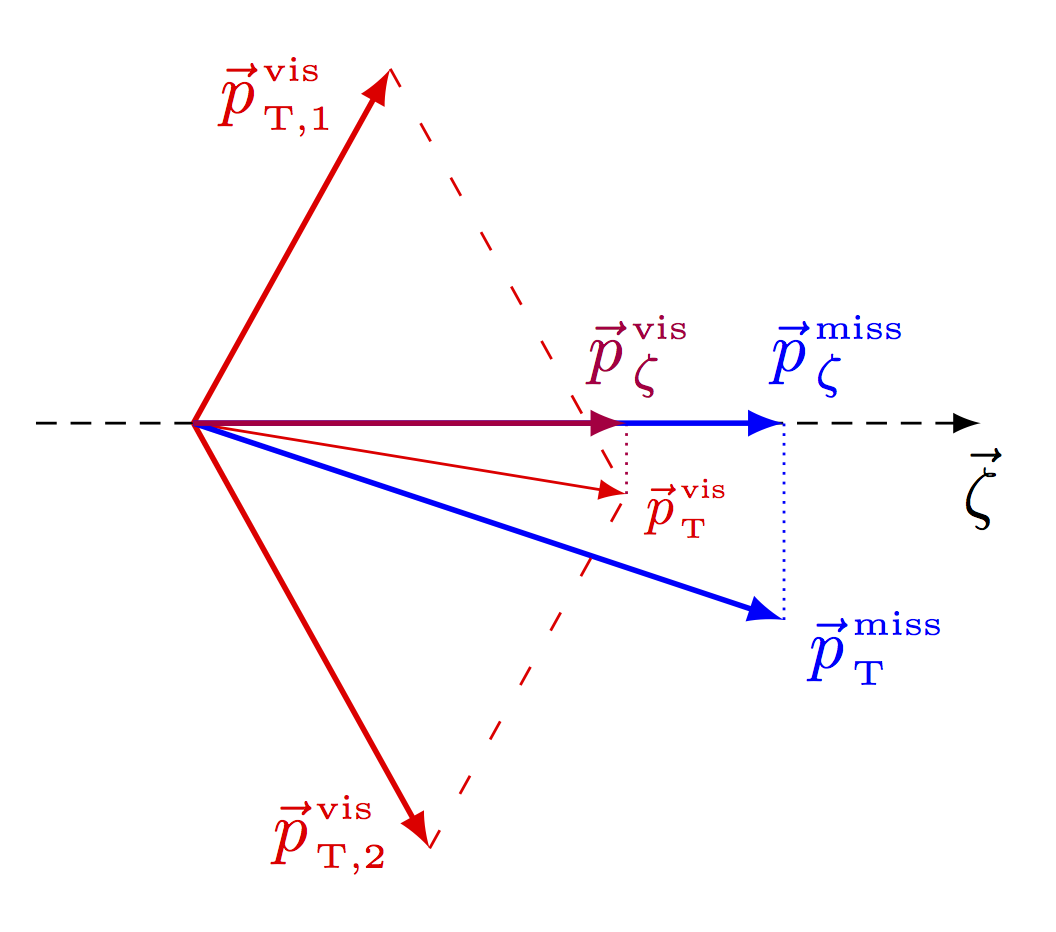Construction of the Pζ variable to help discriminate against backgrounds in H → 𝜏𝜏 analyses in proton-proton collision data at the CMS detector. Inspired by Jang Dongwook’s dissertation.
Edit and compile if you like:
% Basic drawings% https://www.sharelatex.com/blog/2013/08/27/tikz-series-pt1.html% https://www.tug.org/TUGboat/tb29-1/tb91walczak.pdf\documentclass{article}\usepackage{amsmath}\usepackage{tikz}\tikzset{>=latex} % for LaTeX arrow head\usetikzlibrary{calc} % to add coordinates\newcommand*{\vv}[1]{\vec{\mkern0mu#1}} % correct misalignment%\newcommand{\sq}{\medmuskip=1mu \thinmuskip=1mu \thickmuskip=1mu} % squeeze% split figures into pages\usepackage[active,tightpage]{preview}\PreviewEnvironment{tikzpicture}\setlength\PreviewBorder{5pt}%\begin{document}% PZETA\begin{tikzpicture}% vector labels\def\pTM{\vv{p}^\text{\tiny\,miss}_\text{\tiny\,T}}\def\pT{ \vv{p}^\text{\tiny\,vis}_\text{\tiny\,T}}\def\pTA{\vv{p}^\text{\tiny\,vis}_\text{\tiny\,T,1}} %$\ell$\def\pTB{\vv{p}^\text{\tiny\,vis}_\text{\tiny\,T,2}} %$\tau_\text{h}$% define point\coordinate (O) at (0.0, 0.0);\coordinate (Z) at (4.0, 0.0);\coordinate (A) at (1.0, 1.8);\coordinate (B) at (1.2,-2.16);\coordinate (M) at (3.0,-1.0);\coordinate (AB) at ($(A)+(B)$);\path let \p{AB}=(AB) in coordinate (P) at (\x{AB},0); % projection\path let \p{M} =(M) in coordinate (Q) at (\x{M},0); % projection% axis\draw[->,densely dashed]
Click to download: pzeta.tex • pzeta.pdf
Open in Overleaf: pzeta.tex


